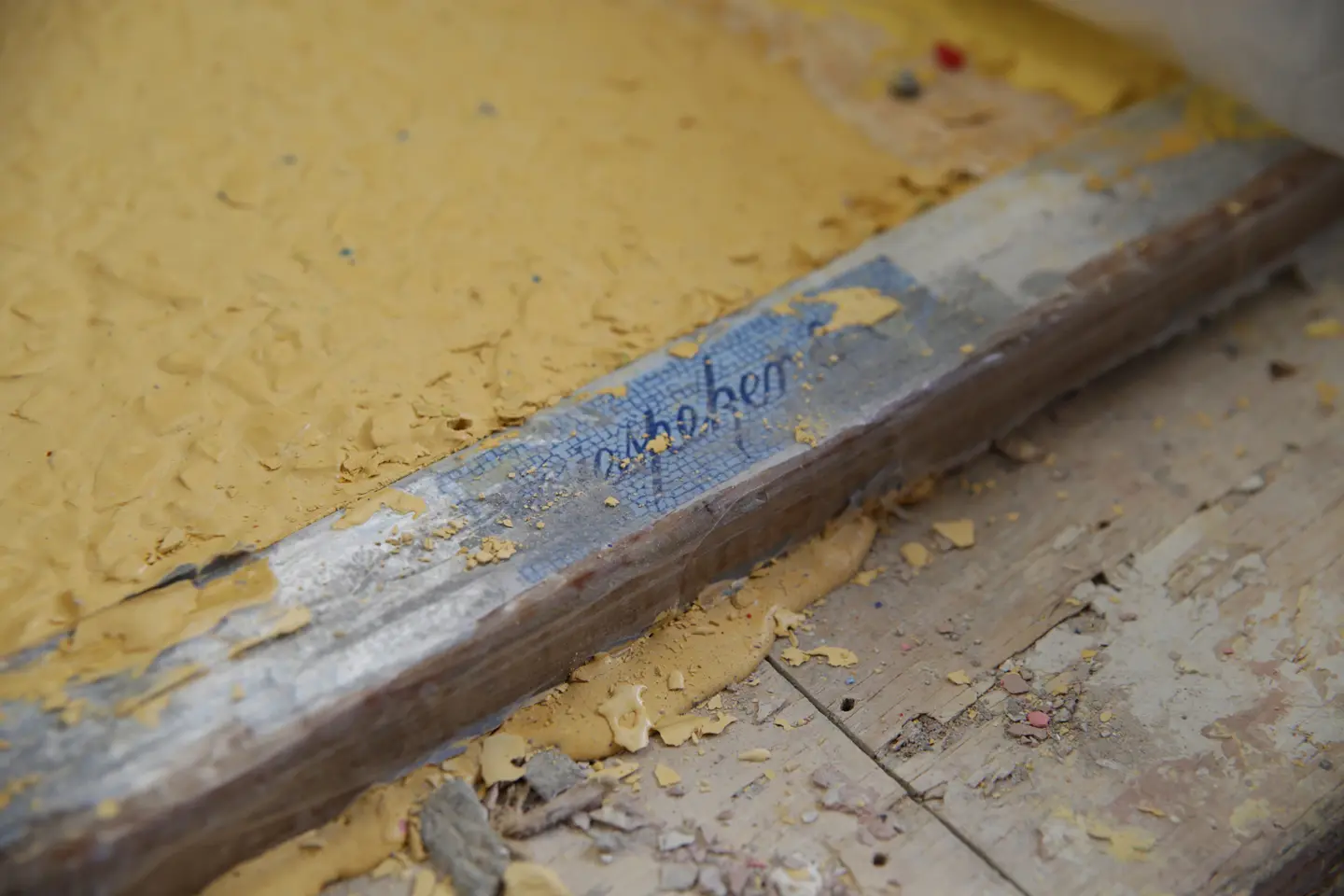Legend has it that terrazzo first surfaced in Italy when quarry workers took offcuts of marble home for use on their own floors. These offcuts were set into some form of mortar. No-one can put an exact date on the first terrazzo floor – but let’s assume around 600 years ago.
To this day, terrazzo is still essentially marble chippings set into cement. Those first floors were rough set and uneven, but with refined polishing techniques and opportunities for bespoke colouring and flexibility in thickness, terrazzo soon became a material of choice.
Terrazzo production
There are three main terrazzo production processes: mechanically made; hand-cast using traditional labour-intensive methods; or poured in situ (similar to screed). As well as traditional cement-based terrazzo, a more recent option is resin (or epoxy) based terrazzo.
Mechanically made
Our Italian partners produce thick sheets of terrazzo and compress them; this mechanisation process adds strength in the concrete to enable sheets to be sliced thinly and cut into tiles. Detail such as grooves and insets are introduced at the Diespeker factory using Italian cutting machinery. Standard terrazzo is perfect for larger projects requiring consistency.
Hand cast traditions
Traditional hand casting skills are the best way to achieve bespoke terrazzo design. The process requires careful attention to ensure consistency of mix and colouration. The mixture is laid, rolled, trowelled and left to harden for three or more days before being cut to the required thickness then ground and polished.
Poured
Cement or resin-based terrazzo is often poured on site to create, for example, a seamless floor. This is then ground and polished to deliver a beautifully smooth surface. Cement is suitable for both indoor and outdoor use, while resin is generally used indoors and has the added benefits of slight flexibility.
What goes in the mix?
A better question might be, what can’t be used in the terrazzo mix? One ecological client, keen on recycling, replaced the marble chips with washers, screws and toothbrushes. Black Ferodo was cast into stair treads made for the Planetarium to improve visibility for visitors. More luxurious mixes can include semi-precious stones or glints of gold. Diespeker has successfully used the lot – metal, brass, aluminum, sea shells, broken bottles, bricks and coloured glass, even – for countertops for the Olympic Stadium – debris from a local building site.
Where to use terrazzo
- Flooring – practical and creative
- Countertops in bars, restaurants and kitchens
- Plinths for retail displays
- Cladding for walls and counters
- Unique stairs for offices, shops and homes
- Unusual items of furniture
- With careful sealing, in wet rooms, bathrooms and kitchens
- Art installations
Longevity and sustainability
With the expertise and skill to match terrazzo already in place, Diespeker can also refurbish rather than replace existing flooring, stairs and cladding, making terrazzo a sustainable option. A refurbishment at Charing Cross Station included the replacement and repair of worn terrazzo tiles on the main concourse, a far more ecologically sound solution than replacing the large area. For a London office renovation Diespeker repaired more than 120 terrazzo stairs over seven floors; after decades of being covered in wood and carpet the stairs were returned to their original glory. And let’s face it, making use of offcuts left over from marble slabs as aggregate in terrazzo is a great method of reducing waste.
Terrazzo | Cement-based vs resin-based
- Cement gives the impression of a classic surface
- Cement has a proven longevity
- Cement is often less expensive to resin
- Resin brings brighter colours to life
- Resin is less prone to cracking and crazing
- Resin is great for a thin-set floor
- Resin usually has a smoother finish
Best of both worlds – mix and match
Resin-based terrazzo enables a seamless finish and Diespeker has pushed the boundaries, even using it for vertical surfaces. Recent projects include coating five sides of a box for a boutique and creating curved resin skirting at a renowned British artist’s studio. Matching resin and cement-based terrazzo gives the best of both worlds and with the finished products side by side, it can be hard to tell the difference.
Maintenance
Terrazzo maintenance is the same as marble and granite; a simple chemical clean, or a scrub with nylon pads. Terrazzo needs to be sealed well for water resistance, but it’s a durable material. A restored terrazzo floor will need a full regrind and re-polish. Diespeker recently restored a floor from the turn of the last century (more than 100 years old) and it now looks almost as good as the day it was laid.
Why the Diespeker name is synonymous with terrazzo
When people think of terrazzo, they often think of us – Diespeker spotted the terrazzo revival early and has been an early advocate in the UK. Skills and inventiveness have been developed over many decades and we continue to push the boundaries with terrazzo, even working out how to bend resin terrazzo cladding for a curved countertop. Developing new lines, offering a bespoke sample service, inviting customers to browse available aggregate options – or suggest their own – and always ready to have a conversation to pin down exactly what design will fit the bill, is what separates Diespeker from the competition.
The splendour of a finished terrazzo installation still really excites the Diespeker team, even after so many years and so many projects. And that passion is what makes Diespeker the obvious choice for any terrazzo job.

